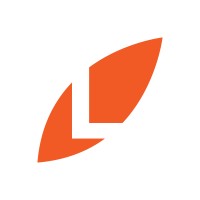Company Cyber Security Posture
NANA
NA Company Details
NA
NA
NA
NA
NA
NA
Scan still pending
NA
NA
Between 200 and 800
This score is AI-generated and less favored by cyber insurers, who prefer the TPRM score.
 NA Global Score
NA Global Score.png)

Company Scoring based on AI Models
| Model Name | Date | Description | Current Score Difference | Score |
|---|---|---|---|---|
| AVERAGE-Industry | 03-12-2025 | This score represents the average cybersecurity rating of companies already scanned within the same industry. It provides a benchmark to compare an individual company's security posture against its industry peers. | N/A | Between 200 and 800 |
Company Cyber Security News & History
| Entity | Type | Severity | Impact | Seen | Url ID | Details | View |
|---|
Company Subsidiaries

NA
Access Data Using Our API

Get company history
.png)
NA Cyber Security News
What to do and how to prevent a dental data breach or ransomware attack with Dr. Lorne Levine
None
Pontiac by Jim Schutze — school of hard knocks for a gilded world
Pontiac by Jim Schutze — school of hard knocks for a gilded world ... Roula Khalaf, Editor of the FT, selects her favourite stories in this weekly ...
Guest Opinion: Professional development from the school of hard knocks
BY TERRI MORK SPEIRS |. Director of marketing and communications, Des Moines Pastoral Counseling Center. Recently the board of my professional group, ...
School of hard knocks for Macron’s MPs
Lawmakers from La République En Marche suffer physical and verbal abuse as they struggle to promote the party's liberal agenda.
School of Hard-Knocks: A Q&A with Top Chef Fabio Viviani
If you watch Bravo's Top Chef, you no doubt remember Fabio Viviani, the charismatic Italian named “Fan Favorite” in Season 5.
Would-be Harvard students shipped to School of Hard Knocks after offensive memes
"Some of the messages joked that abusing children was sexually arousing, while others had punchlines directed at specific ethnic or racial ...
School of hard knocks no barrier for billionaires
It shows dropout billionaires are more prevalent than just household names such as Microsoft co-founder Bill Gates or Facebook co-founder Mark ...
GH man becomes a millionaire at 27 after moving abroad, buys G-Wagon
A Ghanaian man, in an interview with The School of Hard Knocks, revealed that he became a millionaire at 27 after starting a cybersecurity ...

NA Similar Companies

The University of Auckland
The University of Auckland | Waipapa Taumata Rau is New Zealand’s largest and leading university. We celebrate our location in the beautiful harbour city of Auckland | Tamaki Makaurau, our unique position in Aotearoa New Zealand and our place within the Pacific. Our te reo Māori name was gifted b

University of Maryland
As the State's flagship, the University of Maryland (UMD) strives to bring students deeply into the process of discovery, innovation and entrepreneurship. Whenever possible, hands-on research complements classroom instruction. Interdisciplinary collaborations facilitate the understanding of complex

UC San Diego
Recognized as one of the top 15 research universities worldwide, our culture of collaboration sparks discoveries that advance society and drive economic impact. Everything we do is dedicated to ensuring our students have the opportunity to become changemakers, equipped with the multidisciplinary too

Laureate Education, Inc.
For more than 20 years, we have remained committed to making a positive impact in the communities we serve, by providing accessible, high-quality undergraduate, graduate, and specialized degree programs. We know that when our students succeed, countries prosper, and societies benefit. We take very

University of Johannesburg
It is the vision of the University of Johannesburg to be a premier, embracing, African city university offering a mix of vocational and academic programmes that advances freedom, democracy, equality and human dignity as high ideals of humanity through distinguished scholarship, excellence in teachin

University of Pittsburgh
The University of Pittsburgh is a top-ranked, public institution in Pennsylvania and a member of the Association of American Universities of leading research universities. With our discoveries, we are recognized as one of the most innovative universities in the world. We invent the paths of the futu

Frequently Asked Questions
Explore insights on cybersecurity incidents, risk posture, and Rankiteo's assessments.
NA CyberSecurity History Information
How many cyber incidents has NA faced?
Total Incidents: According to Rankiteo, NA has faced 0 incidents in the past.
What types of cybersecurity incidents have occurred at NA?
Incident Types: The types of cybersecurity incidents that have occurred include .
Additional Questions
What Do We Measure?
















Every week, Rankiteo analyzes billions of signals to give organizations a sharper, faster view of emerging risks. With deeper, more actionable intelligence at their fingertips, security teams can outpace threat actors, respond instantly to Zero-Day attacks, and dramatically shrink their risk exposure window.
These are some of the factors we use to calculate the overall score:
Identify exposed access points, detect misconfigured SSL certificates, and uncover vulnerabilities across the network infrastructure.
Gain visibility into the software components used within an organization to detect vulnerabilities, manage risk, and ensure supply chain security.
Monitor and manage all IT assets and their configurations to ensure accurate, real-time visibility across the company's technology environment.
Leverage real-time insights on active threats, malware campaigns, and emerging vulnerabilities to proactively defend against evolving cyberattacks.




